KRK GoAux monitor speakers review: Small and mobile with a sound that’s big and accurate
Producers have flocked to KRK’s iconic, affordable, and high-quality yellow-coned speakers for many years – and this new release should see this trend continue.
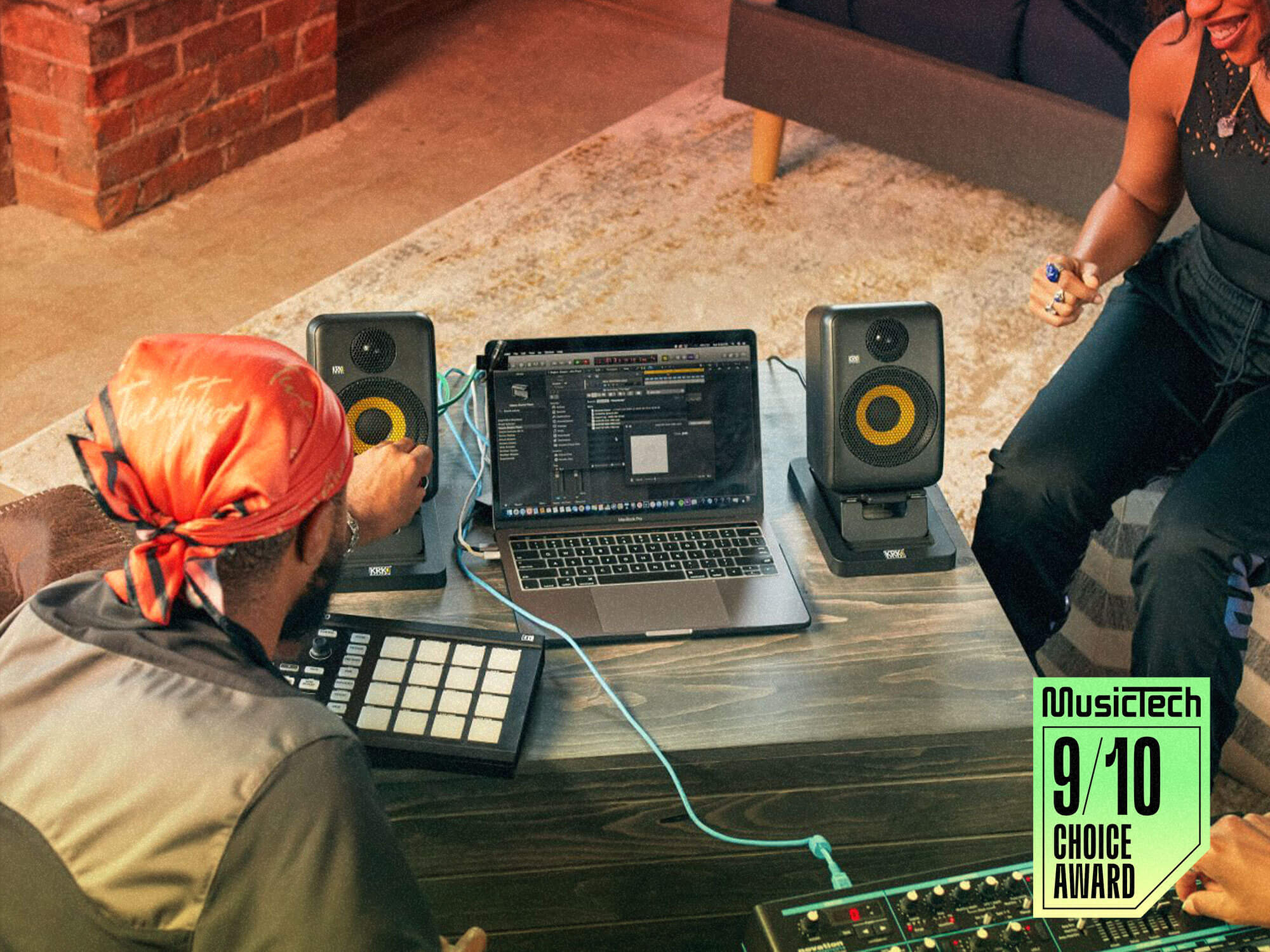
Review Overview
Our rating
9
Our verdict
8/10 GoAux 3
⊕ Phenomenal sound quality for the size of speaker
⊕ Customisation not overly-complicated
⊕ Convenient Bluetooth, plus incredibly handy USB audio connection option on GoAux 4
⊕ Simple, low-latency room correction (GoAux 4 only)
⊕ Sturdy bag and stands
⊕ GoAux 4s represent great value for money
⊖ LED indicators difficult to read
⊖ Thumb screws could get lost
⊖ GoAux 3 limited to unbalanced inputs only
⊖ GoAux 3s have stiff competition at the price point
KRK’s new GoAux series is designed to offer high-quality sound with the convenience of supreme portability. With a padded carry case and desktop stands bundled in, these speakers are designed for monitoring duties on the go and in the field.
The four-inch GoAux 4 heads up the range and is the main focus of this review. In addition to portability, this flagship model offers a range of connection methods such as jack, mini-jack and RCA analogue ins, Bluetooth, and even USB audio. Simple EQ contour controls are provided to adjust the sound but, by far, the Go Aux 4’s stand-out customisation feature is a built-in room correction EQ, configured using an accompanying lapel mic.
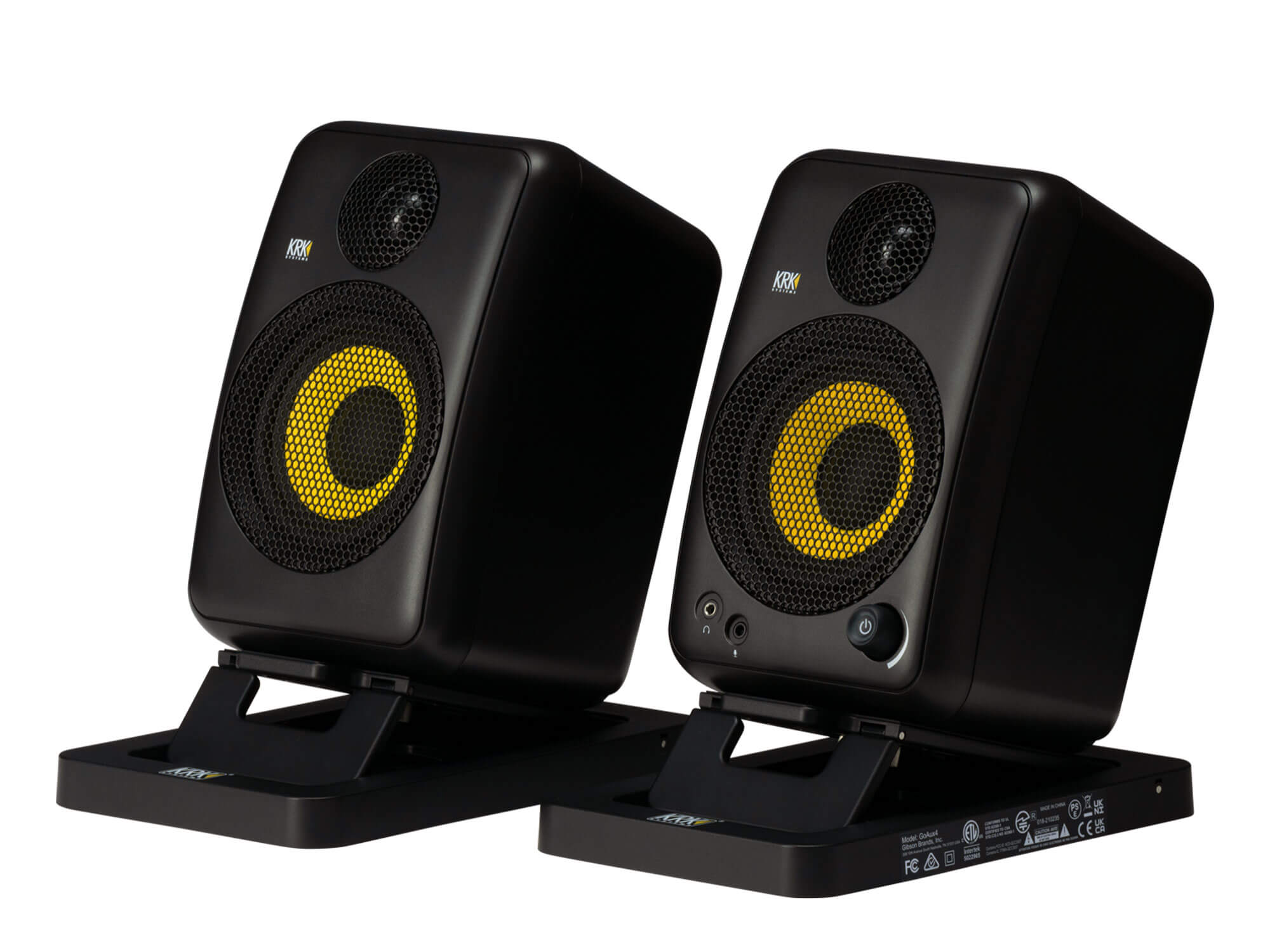
Out of the bag
Unzipping the plush KRK-branded carry case reveals a stylish pair of monitors that seem built to last and are ready for action.
The grilles protecting the drivers are sturdy, while the main rotary control on the front isn’t at all wobbly. Aside from a difference in construction materials, the overall build quality reminds us of the popular (and more expensive) Genelec 8020s – another popular choice for monitoring on location.
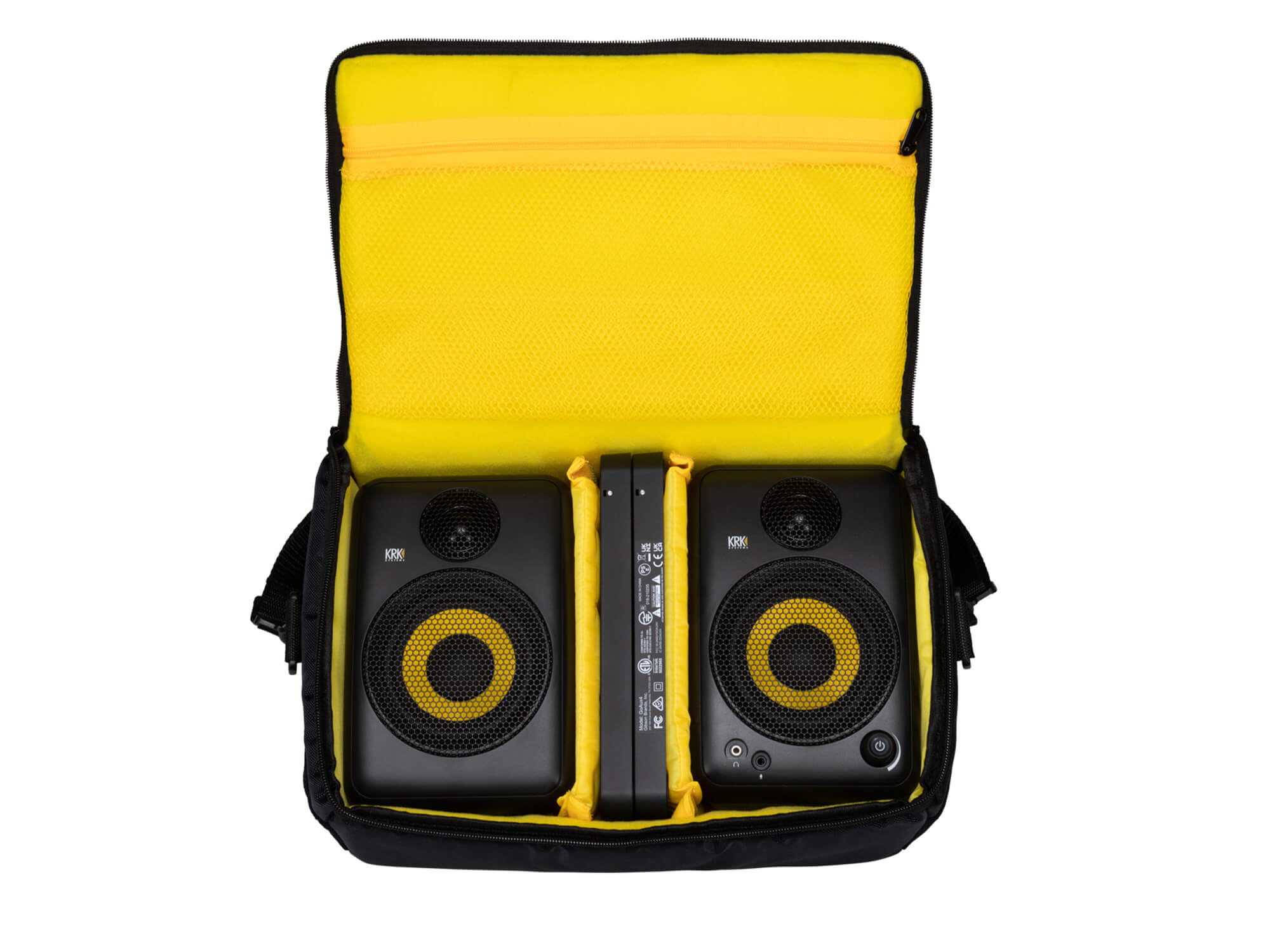
The GoAux stands – which aren’t permanently attached – fix to the speaker base with a metal, knurled thumb screw. They’re neat and fairly quick to get set up, although it’s a shame screw fixings aren’t the ‘captive’ type (like those used on TV stands, for example), so as to avoid losing them.
The front panel of the GoAux 4 features a rotary encoder for volume and toggling standby mode, a 3.5mm headphone socket (which mutes the speakers when used), plus an input mini-jack for the room correction microphone.
On the back of the master, left-hand speaker, the main inputs are duplicated on RCAs and balanced jacks; there’s also an auxiliary mini-jack stereo input and USB audio connector. Controls include buttons for Bluetooth pairing, high- and low-frequency adjustment, plus another button that starts the room correction process when held. Meanwhile, the right-hand, passive speaker connects to the left by means of a data cable, which is far from flimsy and has plenty of length (useful for wide placement in a domestic situation perhaps). Still, unfortunately, the connectors used tend to fit into sockets too tightly and can be difficult to disconnect. The cable used isn’t especially flexible either.
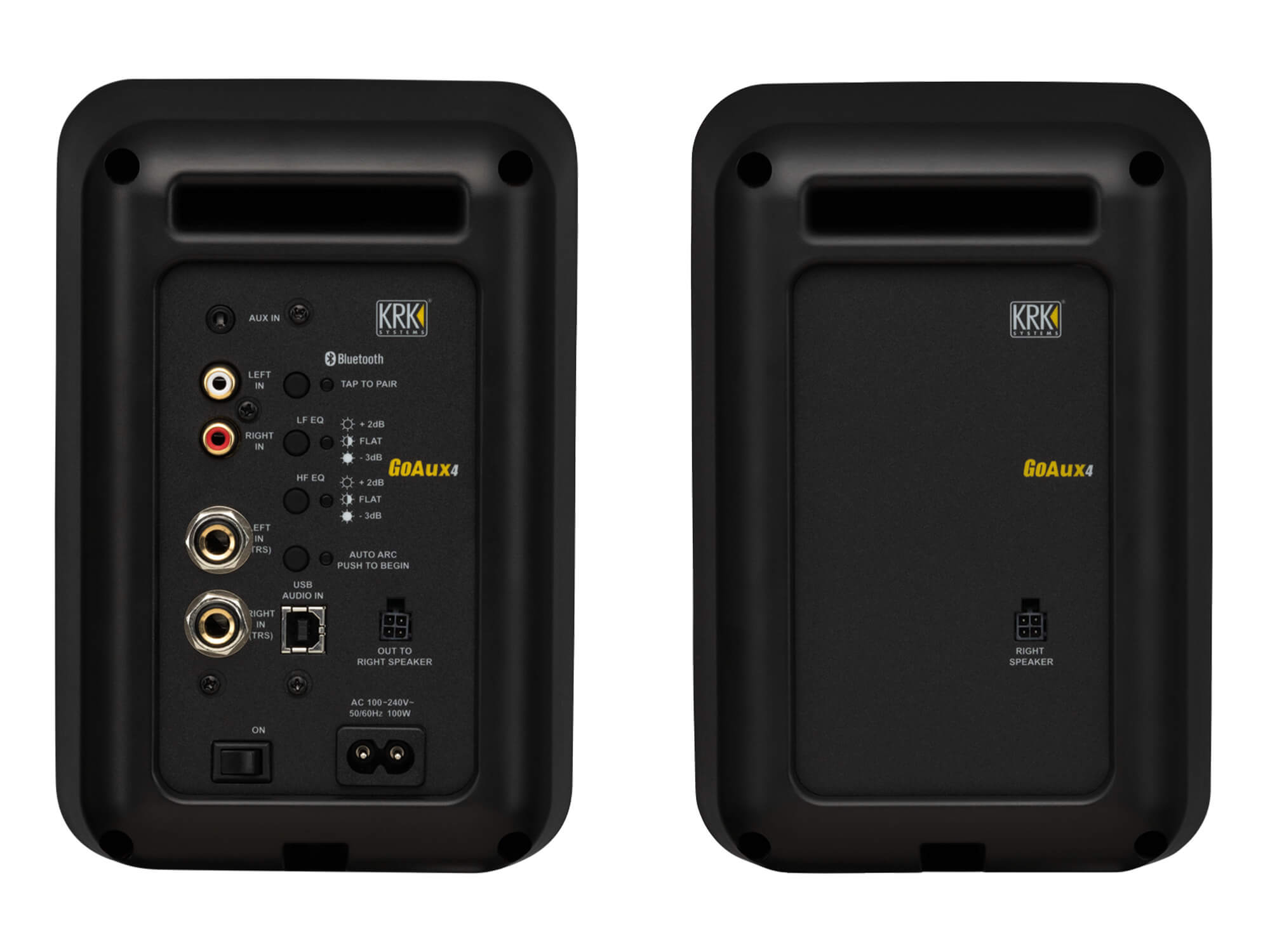
Get connected
Time to test the Bluetooth audio connection in a domestic setting. With all EQ and processing switched off, we’re immediately blown away by the amount of low-frequency depth and transient articulation afforded by the GoAux 4, all without over-blown, fatiguing high frequencies. Of course, you can’t expect to hear lots of energy in the sub-bass range, however, the KRKs sound far larger than their diminutive size – and more expensive.
Once again, we think of the Genelec 8020 in terms of equivalent form factor bass extension and subjective sound quality. It’s particularly impressive given the KRKs go above and beyond with the range of extras on offer.
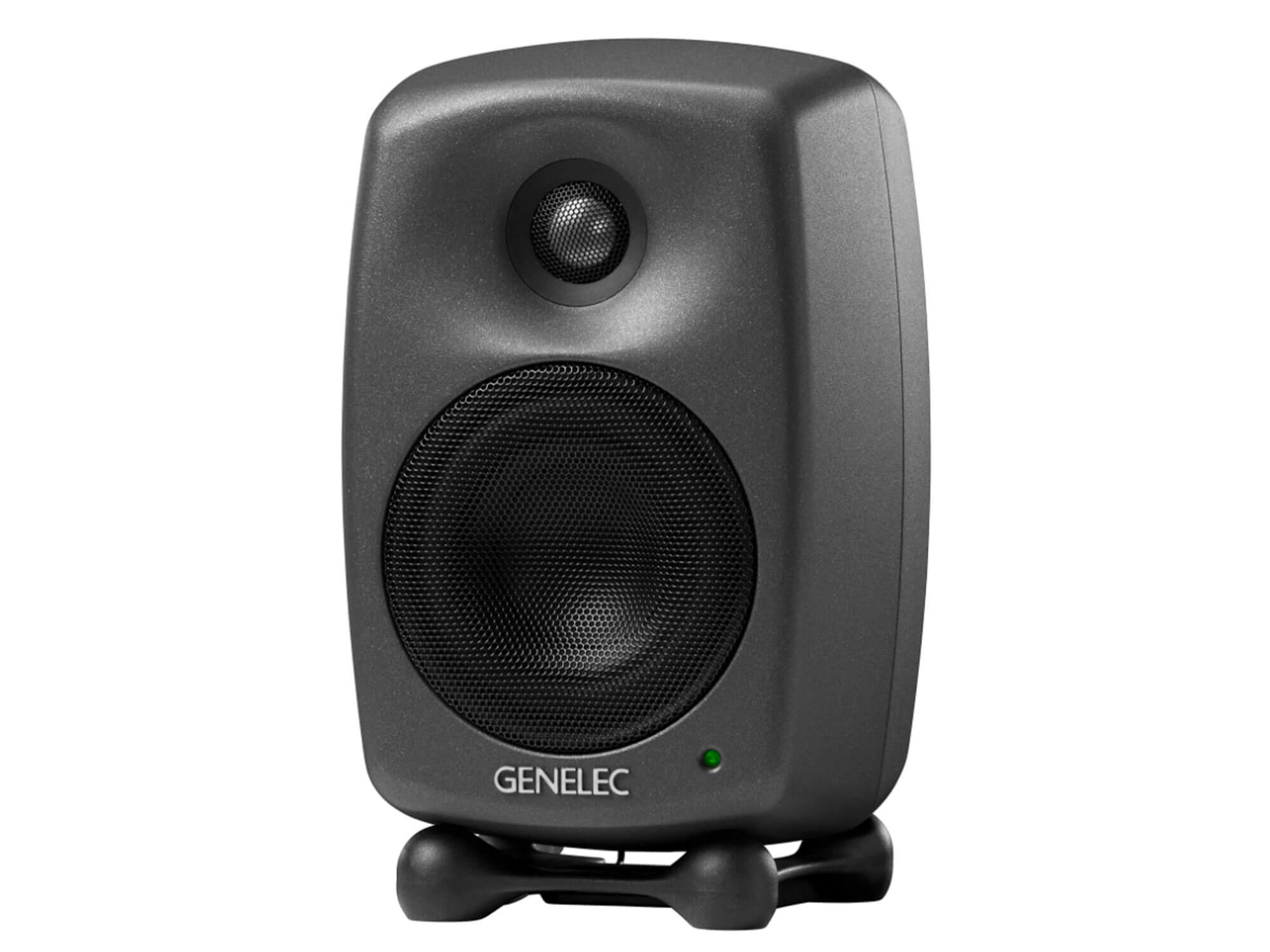
After auditioning the effect of the high and low EQ controls, we stick to the flat setting. One minor drawback here is the system of using a single LED’s brightness to represent the different EQ states of +2dB, flat and -2dB; it’s hard to see what’s what without spinning the monitors around and looking at the back panel straight-on. Simple toggle switches would have been easier to operate and less likely to be switched accidentally. In a similar way to the 8020s (and many two-way monitors), mids don’t appear to be quite as present as lows and highs, and the listener perceives this as a subtle scooped effect.
The room EQ test procedure is swift and comprises a series of sine-wave test signals being played by the speaker and picked up by the test microphone. These signals start at the bottom of the range and rise in step, but only reach up to the mid-range. This might seem relatively limited, and you shouldn’t expect results comparable to the likes of Sonarworks’ room calibration, but it does a fine job of speedily locating – and fixing – low-frequency resonances and dips associated with rooms and placements, plus midrange anomalies caused by placement on a desk.
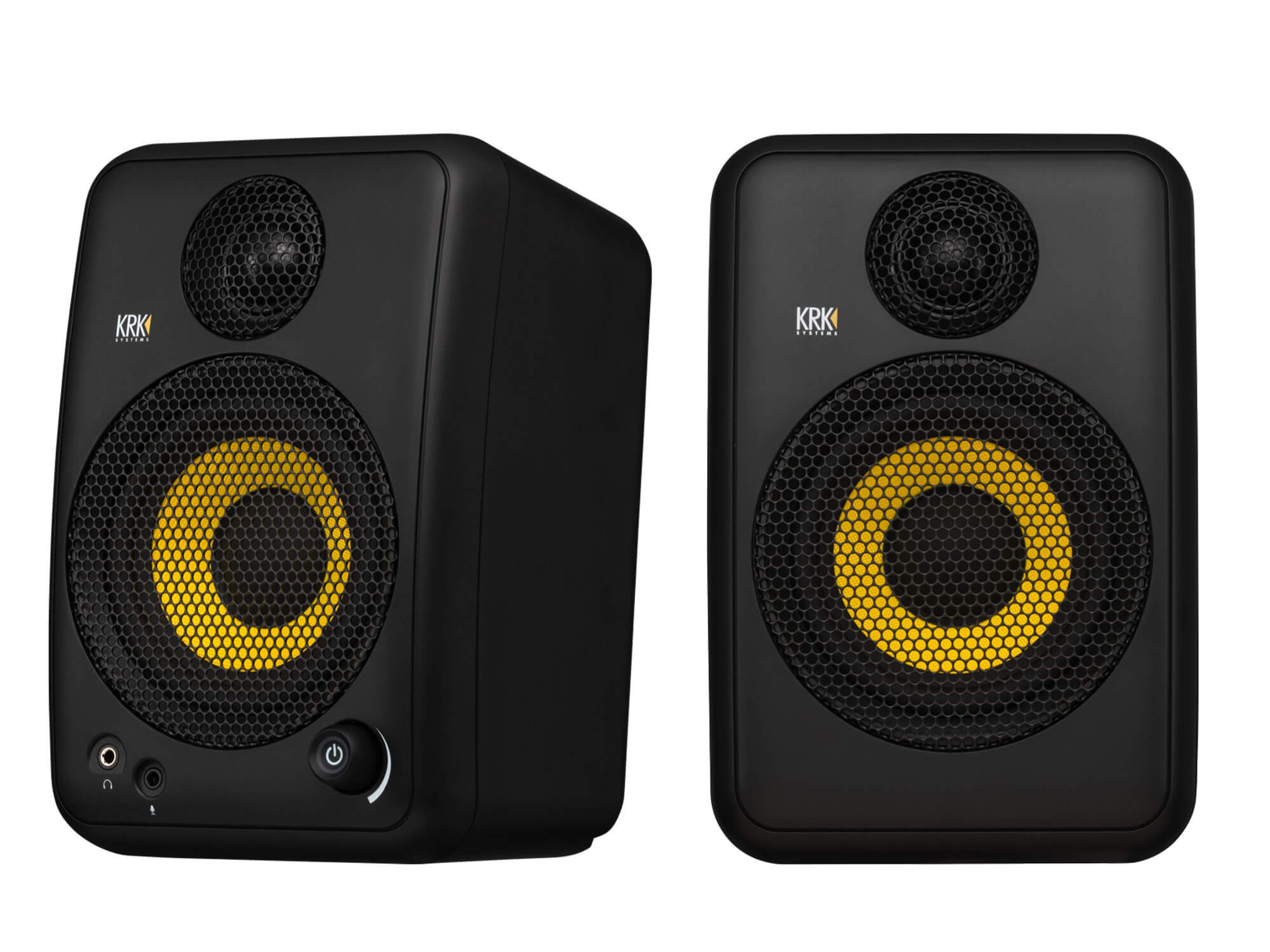
With room calibration switched on, we can hear low/mid elements in a mix with a greater deal of separation and clarity. What’s more, with the room EQ on board, you’re guaranteed more consistency of listening experience when you switch mixing environments and rerun the calibration process. Reference tracks all have pleasing articulation in high elements such as snare and hats, without being harsh. Subs are present, although less strong or defined as on our (6.5-inch) Genelec monitors. There’s also a hint of boxiness with the KRKs when A-B’ing the two sets, but you can’t really expect any more in terms of playback performance with enclosures of this size.
When auditioning our mixes, the onboard USB audio function takes all the fuss out of getting set up, working well even at lower buffer settings – without glitches or dropouts – when playing through software instruments. An upside to the lean room EQ processing is that this doesn’t introduce any noticeable latency when switched on, whereas with fancier systems you often have to bypass the room correction when triggering virtual instruments.
Need to downsize?
KRK also shipped us the smaller GoAux 3 for review. As the name suggests, these have three-inch woofers and consequently are smaller and lighter than the GoAux 4. The downsides of this smaller size are a lack of room correction EQ, no USB audio and only unbalanced analogue inputs.
Despite these limitations, playback quality is still impressive considering the size, with admirable source separation and stereo imaging. Of course, there’s less bass extension and both room correction and USB audio are both sorely missed when you step down to this model from the 4s. The GoAux 3 brings revealing monitoring to tight spaces and maximises the convenience of portability, but for the extra headroom, handy features and bass extension, the 4s are well worth the extra outlay.
KRK proves that accurate monitoring on the go is indeed possible, all at a reasonable price. Our money’s firmly on the GoAux 4!
Learn more at krkmusic.com
Key features
Price:
$419 GoAux 4
$349 GoAux 3
Both models:
2-way, rear-ported active design
1-inch dome tweeter
Crossover frequency: 2.5kHz
3.5mm auxiliary input
Bluetooth 5.0
3.5mm headphone socket (auto-mutes monitors)
Low and high-frequency EQ presets (+2dB, flat and -2dB)
ABS construction
Comes with a protective carry bag with shoulder strap, folding desktop stands and figure 8 power cable
GoAux 4:
4-inch woofer
Amplifiers: 33W RMS per woofer; 17W RMS per tweeter
Balanced jack and unbalanced RCA analogue inputs
USB-B port for USB audio connection
Automatic room calibration EQ with included sensor mic
55 Hz – 22 kHz frequency range
Dimensions (per speaker): 205 mm x 136 mm x 140 mm
Weight (including bag and stands): 4.3 kg
GoAux 3:
3-inch woofer
Amplifiers: 22W RMS per woofer; 8W RMS per tweeter
Unbalanced RCA analogue inputs
No USB audio or room calibration EQ
60 Hz – 22 kHz frequency range
Dimensions (per speaker): 172 mm x 111 mm x 120 mm
Weight (including bag and stands): 3.15 kg